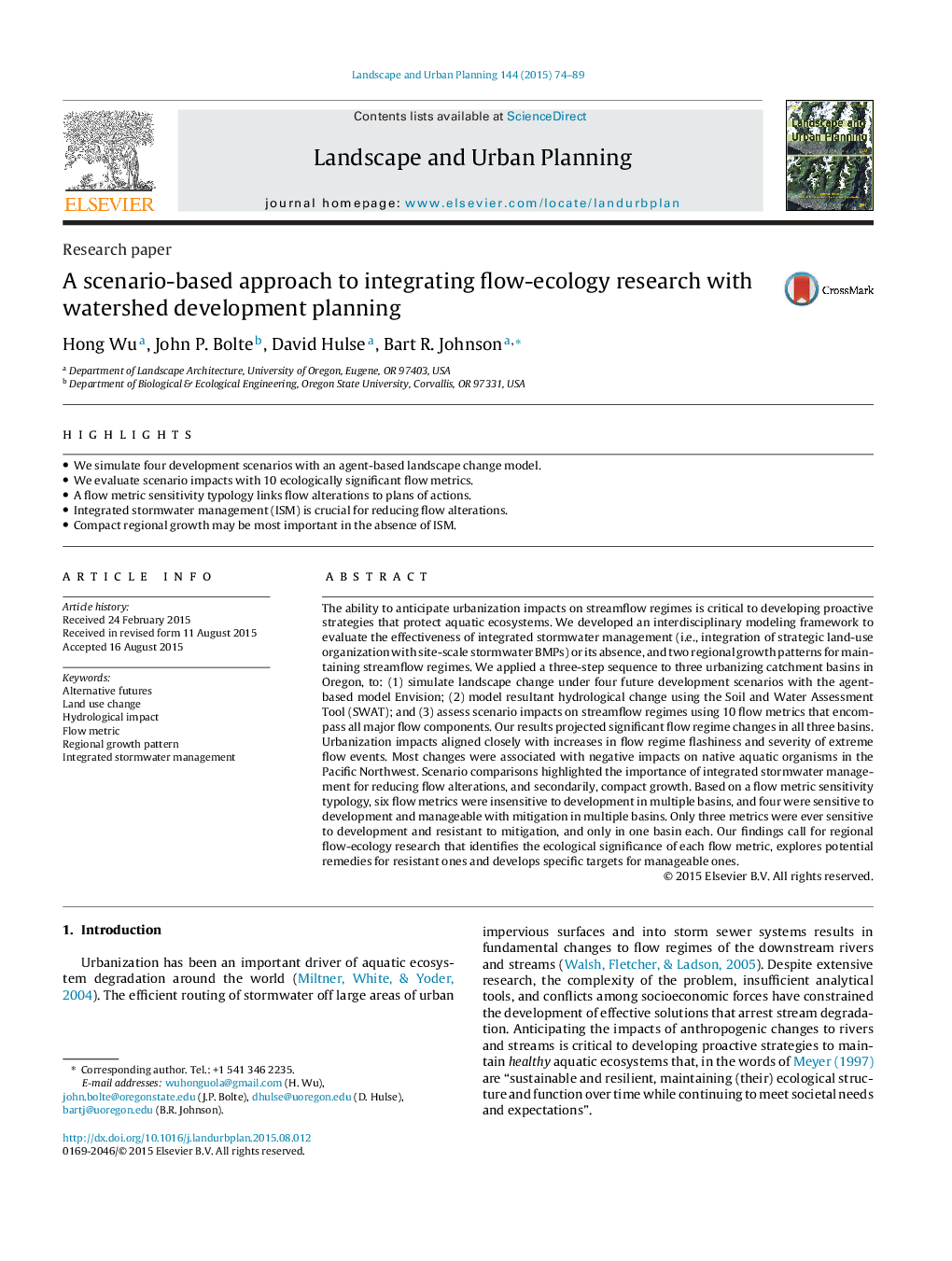| کد مقاله | کد نشریه | سال انتشار | مقاله انگلیسی | نسخه تمام متن |
|---|---|---|---|---|
| 7460897 | 1484614 | 2015 | 16 صفحه PDF | دانلود رایگان |
عنوان انگلیسی مقاله ISI
A scenario-based approach to integrating flow-ecology research with watershed development planning
ترجمه فارسی عنوان
یک رویکرد مبتنی بر سناریو برای یکپارچه سازی تحقیق جریان زیست محیطی با برنامه ریزی توسعه حوضه
دانلود مقاله + سفارش ترجمه
دانلود مقاله ISI انگلیسی
رایگان برای ایرانیان
کلمات کلیدی
آینده ی آینده تغییر کاربری زمین، تاثیر هیدرولوژیکی، جریان متریک، الگوی رشد منطقه ای، یکپارچه مدیریت آب آشامیدنی،
موضوعات مرتبط
علوم زیستی و بیوفناوری
علوم کشاورزی و بیولوژیک
بوم شناسی، تکامل، رفتار و سامانه شناسی
چکیده انگلیسی
The ability to anticipate urbanization impacts on streamflow regimes is critical to developing proactive strategies that protect aquatic ecosystems. We developed an interdisciplinary modeling framework to evaluate the effectiveness of integrated stormwater management (i.e., integration of strategic land-use organization with site-scale stormwater BMPs) or its absence, and two regional growth patterns for maintaining streamflow regimes. We applied a three-step sequence to three urbanizing catchment basins in Oregon, to: (1) simulate landscape change under four future development scenarios with the agent-based model Envision; (2) model resultant hydrological change using the Soil and Water Assessment Tool (SWAT); and (3) assess scenario impacts on streamflow regimes using 10 flow metrics that encompass all major flow components. Our results projected significant flow regime changes in all three basins. Urbanization impacts aligned closely with increases in flow regime flashiness and severity of extreme flow events. Most changes were associated with negative impacts on native aquatic organisms in the Pacific Northwest. Scenario comparisons highlighted the importance of integrated stormwater management for reducing flow alterations, and secondarily, compact growth. Based on a flow metric sensitivity typology, six flow metrics were insensitive to development in multiple basins, and four were sensitive to development and manageable with mitigation in multiple basins. Only three metrics were ever sensitive to development and resistant to mitigation, and only in one basin each. Our findings call for regional flow-ecology research that identifies the ecological significance of each flow metric, explores potential remedies for resistant ones and develops specific targets for manageable ones.
ناشر
Database: Elsevier - ScienceDirect (ساینس دایرکت)
Journal: Landscape and Urban Planning - Volume 144, December 2015, Pages 74-89
Journal: Landscape and Urban Planning - Volume 144, December 2015, Pages 74-89
نویسندگان
Hong Wu, John P. Bolte, David Hulse, Bart R. Johnson,
